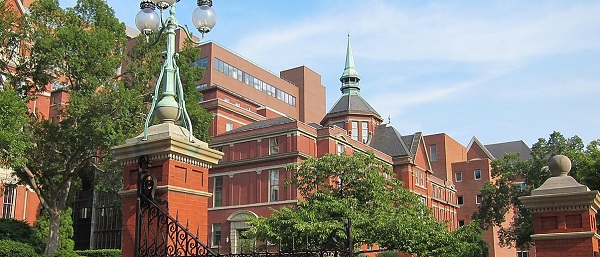Uncategorized
Middle schoolers are now using AI to create ‘deepfake’ pornography of their classmates

From LifeSiteNews
It’s happening all over the world: a generation weaned on hardcore pornography is increasingly enabled by AI technology to create imagery of people they know personally.
A recent news story out of Alabama should be getting far more attention than it is, because it is a glimpse into the future. Middle school students are using artificial intelligence (AI) to create pornographic images of their female classmates:
A group of mothers in Demopolis say their daughters’ pictures were used with artificial intelligence to create pornographic images of their daughters. Tiffany Cannon, Elizabeth Smith, Holston Drinkard, and Heidi Nettles said they all learned on Dec. 4 that two of their daughters’ male classmates created and shared explicit photos of their daughters. Smith said since last Monday, it has been a rollercoaster of emotions.
“They’re scared, they’re angry, they’re embarrassed. They really feel like why did this happen to them,” said Smith. The group of mothers said there is an active investigation with Demopolis Police. However, they wish for the school district to take action. They believe this is an instance of cyberbullying and there are state laws and policies to protect their girls.
“We have laws in place through the Safe School’s law and the Student Bullying Prevention Act, which says that cyberbullying will not be tolerated either on or off campus,” said Smith. “It takes a lot for these girls to come forward, and they did. They need to be supported for that. Not just from their parents, but from their school and their community,” said Nettles.
The school hasn’t given many details yet, with the Demopolis City Schools Superintendent Tony Willis saying in a statement that there is little they can do: “The school can only address things that happen at school events, school campus on school time. Outside of this, it becomes a parent and police matter. We sympathize with parents and never want wrongful actions to go without consequences – our hearts and prayers go out to all the families hurt by this. That is why we have assisted the police in every step of this process.”
We’ll be seeing a lot more of this in the years ahead, as a generation weaned on hardcore pornography is increasingly enabled by technology to create imagery of people they know personally. The rise of sexting took pornography and made it personal – educators and law enforcement are still grappling with how to curtail the nearly ubiquitous practice of sending and receiving intimate images, the majority of which are then shared with others. Many of these images, by virtue of the age of the students involved, constitute child pornography. AI-generated pornography will create a whole laundry list of other disturbing issues to deal with.
A quick scan of recent headlines will give you a sense of where this is headed. From Fortune: “‘Nudify’ apps that use AI to undress women in photos are soaring in popularity, prompting worries about non-consensual porn.” These apps allow people to “digitally undress” people they know and thus create nonconsensual pornography of girls and women. These apps have already acquired millions of users.
From MIT Technology Review: “A high school’s deepfake porn scandal is pushing US lawmakers into action.” At a New Jersey high school, boys had used AI to “create sexually explicit and even pornographic photos of some of their classmates,” with up to 30 girls being impacted. The sense of violation felt by the victims is profound.
From CNN: “Outcry in Spain as artificial intelligence used to create fake naked images of underage girls.” From the story: “Police in Spain have launched an investigation after images of young girls, altered with artificial intelligence to remove their clothing, were sent around a town in the south of the country. A group of mothers from Almendralejo, in the Extremadura region, reported that their daughters had received images of themselves in which they appeared to be naked.”
One girl was blackmailed by a boy with a doctored image of herself. Another cried to her mother: “What have they done to me?”
From the Washington Post: “AI fake nudes are booming. It’s ruining real teens’ lives.” From the story: “Artificial intelligence is fueling an unprecedented boom this year in fake pornographic images and videos. It’s enabled by a rise in cheap and easy-to-use AI tools that can “undress” people in photographs — analyzing what their naked bodies would look like and imposing it into an image — or seamlessly swap a face into a pornographic video.”
Those are just a few examples of dozens of stories from the past few months. The pornography crisis is being exacerbated further by AI, once again highlighting the unfortunate truth of a joke in tech circles: First we create new technology, then we figure out how to watch porn on it. The porn industry has ruined an untold number of lives. AI porn is taking that to the next level. We should be prepared for it.
Uncategorized
New report warns WHO health rules erode Canada’s democracy and Charter rights

The Justice Centre for Constitutional Freedoms has released a new report titled Canada’s Surrender of Sovereignty: New WHO health regulations undermine Canadian democracy and Charter freedoms. Authored by Nigel Hannaford, a veteran journalist and researcher, the report warns that Canada’s acceptance of the World Health Organization’s (WHO) revised International Health Regulations (IHR) represents a serious erosion of national independence and democratic accountability.
The IHR amendments, which took effect on September 19, 2025, authorize the WHO Director-General to declare global “health emergencies” that could require Canada to follow directives from bureaucrats in Geneva, bypassing the House of Commons and the will of Canadian voters.
The WHO regards these regulations as “binding,” despite having no ability or legal authority to impose such regulations. Even so, Canada is opting to accept the regulations as binding.
By accepting the WHO’s revised IHR, the report explains, Canada has relinquished its own control over future health crises and instead has agreed to let the WHO determine when a “pandemic emergency” exists and what Canada must do to respond to it, after which Canada must report back to the WHO.
In fact, under these International Health Regulations, the WHO could demand countries like Canada impose stringent freedom-violating health policies, such as lockdowns, vaccine mandates, or travel restrictions without debate, evidence review, or public accountability, the report explains.
Once the WHO declares a “Pandemic Emergency,” member states are obligated to implement such emergency measures “without delay” for a minimum of three months.
Importantly, following these WHO directives would undermine government accountability as politicians may hide behind international “commitments” to justify their actions as “simply following international rules,” the report warns.
Canada should instead withdraw from the revised IHR, following the example of countries like Germany, Austria, Italy, Czech Republic, and the United States. The report recommends continued international cooperation without surrendering control over domestic health policies.
Constitutional lawyer Allison Pejovic said, “[b]y treating WHO edicts as binding, the federal government has effectively placed Canadian sovereignty on loan to an unelected international body.”
“Such directives, if enforced, would likely violate Canadians’ Charter rights and freedoms,” she added.
Mr. Hannaford agreed, saying, “Canada’s health policies must be made in Canada. No free and democratic nation should outsource its emergency powers to unelected bureaucrats in Geneva.”
The Justice Centre urges Canadians to contact their Members of Parliament and demand they support withdrawing from the revised IHR to restore Canadian sovereignty and reject blind compliance with WHO directives.
Uncategorized
CNN’s Shock Climate Polling Data Reinforces Trump’s Energy Agenda


From the Daily Caller News Foundation
As the Trump administration and Republican-controlled Congress move aggressively to roll back the climate alarm-driven energy policies of the Biden presidency, proponents of climate change theory have ramped up their scare tactics in hopes of shifting public opinion in their favor.
But CNN’s energetic polling analyst, the irrepressible Harry Enten, says those tactics aren’t working. Indeed, Enten points out the climate alarm messaging which has permeated every nook and cranny of American society for at least 25 years now has failed to move the public opinion needle even a smidgen since 2000.
Appearing on the cable channel’s “CNN News Central” program with host John Berman Thursday, Enten cited polling data showing that just 40% of U.S. citizens are “afraid” of climate change. That is the same percentage who gave a similar answer in 2000.
Dear Readers:
As a nonprofit, we are dependent on the generosity of our readers.
Please consider making a small donation of any amount here.
Thank you!
Enten’s own report is an example of this fealty. Saying the findings “kind of boggles the mind,” Enten emphasized the fact that, despite all the media hysteria that takes place in the wake of any weather disaster or wildfire, an even lower percentage of Americans are concerned such events might impact them personally.
“In 2006, it was 38%,” Enten says of the percentage who are even “sometimes worried” about being hit by a natural disaster, and adds, “Look at where we are now in 2025. It’s 32%, 38% to 32%. The number’s actually gone down.”
In terms of all adults who worry that a major disaster might hit their own hometown, Enten notes that just 17% admit to such a concern. Even among Democrats, whose party has been the major proponent of climate alarm theory in the U.S., the percentage is a paltry 27%.
While Enten and Berman both appear to be shocked by these findings, they really aren’t surprising. Enten himself notes that climate concerns have never been a driving issue in electoral politics in his conclusion, when Berman points out, “People might think it’s an issue, but clearly not a driving issue when people go to the polls.”
“That’s exactly right,” Enten says, adding, “They may worry about in the abstract, but when it comes to their own lives, they don’t worry.”
This reality of public opinion is a major reason why President Donald Trump and his key cabinet officials have felt free to mount their aggressive push to end any remaining notion that a government-subsidized ‘energy transition’ from oil, gas, and coal to renewables and electric vehicles is happening in the U.S. It is also a big reason why congressional Republicans included language in the One Big Beautiful Bill Act to phase out subsidies for those alternative energy technologies.
It is key to understand that the administration’s reprioritization of energy and climate policies goes well beyond just rolling back the Biden policies. EPA Administrator Lee Zeldin is working on plans to revoke the 2010 endangerment finding related to greenhouse gases which served as the foundation for most of the Obama climate agenda as well.
If that plan can survive the inevitable court challenges, then Trump’s ambitions will only accelerate. Last year’s elimination of the Chevron Deference by the Supreme Court increases the chances of that happening. Ultimately, by the end of 2028, it will be almost as if the Obama and Biden presidencies never happened.
The reality here is that, with such a low percentage of voters expressing concerns about any of this, Trump and congressional Republicans will pay little or no political price for moving in this direction. Thus, unless the polls change radically, the policy direction will remain the same.
David Blackmon is an energy writer and consultant based in Texas. He spent 40 years in the oil and gas business, where he specialized in public policy and communications.
-

 Energy1 day ago
Energy1 day agoIt should not take a crisis for Canada to develop the resources that make people and communities thrive.
-

 Fraser Institute2 days ago
Fraser Institute2 days agoCourts and governments caused B.C.’s property crisis—they’re not about to fix it
-

 Alberta1 day ago
Alberta1 day agoFederal budget: It’s not easy being green
-

 Alberta2 days ago
Alberta2 days agoChatGPT may explain why gap between report card grades and standardized test scores is getting bigger
-

 Education2 days ago
Education2 days agoJohns Hopkins University Announces Free Tuition For Most Students
-

 Business2 days ago
Business2 days agoParliamentary Budget Officer begs Carney to cut back on spending
-

 Business1 day ago
Business1 day agoWill Paramount turn the tide of legacy media and entertainment?
-

 Energy1 day ago
Energy1 day agoA picture is worth a thousand spreadsheets




